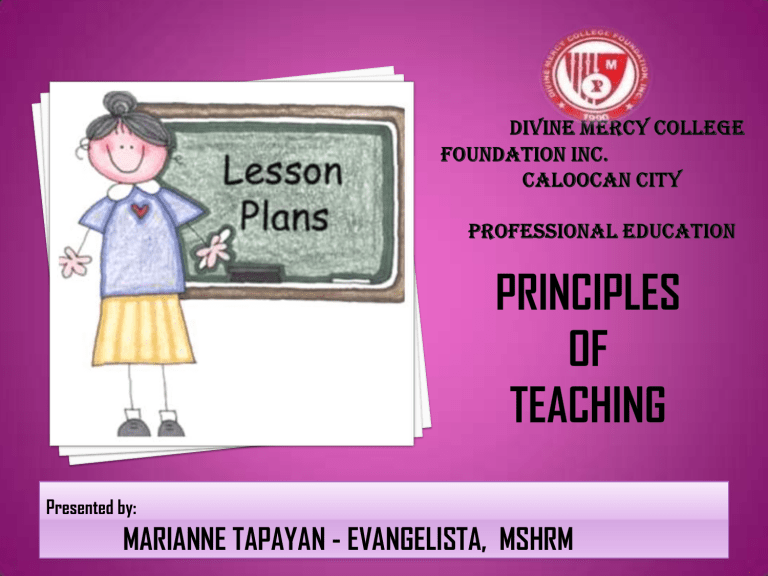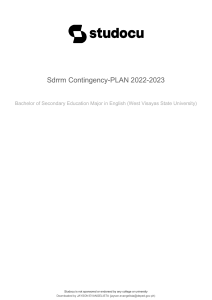
Presented by: MARIANNE TAPAYAN - EVANGELISTA, MSHRM USED AS GUIDE FOR THE TEACHER - They don‟t have to think on their feet. - Gives the teacher a starting point - They build on previous teaching and prepare for coming lessons PROVIDES DIRECTION - They are clear on the procédure to follow. GIVES TEACHER A SENSE OF SECURITY AND CONFIDENCE - They dont lose face in front of their learners. PROVIDES RECORD HELPS KEEP GOOD CLASSROOM MANAGEMENT When a lesson works well, students not only learn— they behave. Classroom management + Well-designed lesson = Higher Achieving Students FOR THE LEARNER They realize that the teacher cares for their learning. They attend a structured lesson: easier to assimilate They appreciate their teacher‟s work as a model of well-organized work to imitate. A written guide used to aid teachers in their lessons. Based on 4 things Interests and abilities of students Your own interests and strengths Your beliefs about teaching and learning Your own openness to change your plan Inform students why they are with you What they will be able to do The learner will………. • • • • • Objectives should also follow the „S.M.A.R.T rule‟: Specific Measurable Attainable Result-oriented Time bound Transition Use time Variety Easy to follow Precise Get class ready to learn Motivates students Hint to the theme Teaches skill Presents information Lecture, demo, pictures, etc. Show the students Use examples May be predefined by the teacher Teacher and student activities defined together with “intents” and “displays.” Learning materials which are typically displayed and used in an instructional setting. Pictures, written materials, spoken words, maps, etc. SMART Board Power Point Overhead Projectors Internet Teacher is available Supervise students as they learn Catch mistakes immediately Teacher is unavailable Student‟s practice learning on their own TYPES OF ASSIGNMENTS Cognitive Outcomes: Intellectual outcomes. They involve the application of facts, theories and concepts. Psychomotor Outcomes: They describe skills the learner develops (Physical). Affective Outcomes: They describe feelings and attitudes which shape our behavior towards people, work and our world (behavioral). 2 way Q and A- Ongoing Bring lesson to an end Review key points Tie everything together • Used to assess students knowledge • Provides grades for report cards • Keeps parents updated Be specific Avoid to many details Anticipate problems Do not use complex terms Decide timing Have materials ready File your plan for the future or words If students are misbehaving: consider re-arranging the order of delivery. compare what actually happened with your original plan. Presented to: Dr. Orias And the students under Professional Education of The Divine Mercy College Foundation Inc (Batch 2013)



